There are no right or wrong formations. We have included some of the more common ones used around the world. Systems and formations require patience and players need time to learn their roles. Good luck!
2-3-1
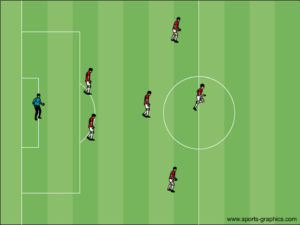
This is one of the most popular formations. Numbers in the midfield, who are expected to help out the defense and support the attack. With a mix of defensive cover with attacking potential, it is a commonly used formation.
Pros:
+ Solid defensive structure
+ Midfielders can help the defense when needed, as well as support the attack.
+ Provides width from the midfielders.
Cons:
– Large demand on the midfielders
– Only two players are back defending if midfield do not have the discipline to track back.
– Possible lack of support to the striker
1-1-3-1
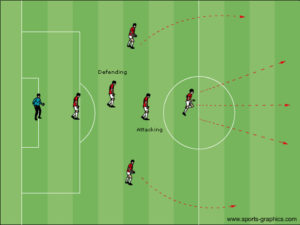
Similar to the 2-3-1, but this formation splits the midfield into two attacking midfielders and a more defensive midfielder. All of the midfielders are expected to attack and defend, but this formation allocates more of a mix between the team: 3 are more attacking, and 3 are more defending. This is excellent if your defensive midfielder is a good at handling the ball and can set up attacks as well as cover the defense.
Pros:
+ Provides balance between defense and attack
+ Having a more defensive midfielder reduces the risk of all of the midfielders rushing forward without supporting the defense.
+ Wingers provide width.
Cons:
– Risk of the team operating as two separate units –attack and defense.
– Defensive midfielder needs to be tactically aware and a good distributor of the ball.
3-2-1
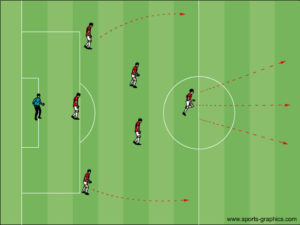
A more defensive strategy. Three in the back provides a solid structure to build out of the back. This is not purely a defensive strategy. It can lead to an attacking formation by pushing the full-backs into the attack. You can also push the central defender into midfield on the attack.
Pros:
+ Defensive base on which to build.
+ Helps to offset better / faster teams.
Cons:
– Possible low numbers on the attack.
– Limited width and forward passing options when moving forward.
2-2-2
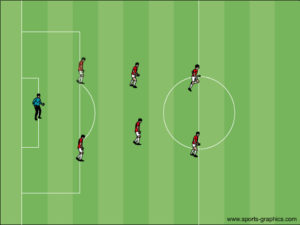
The 2-2-2, on the surface it looks to not offer much width, but this could still be effective where players have enough discipline to make runs either forward or wide. Other players would need to cover appropriately for them
1-4-1
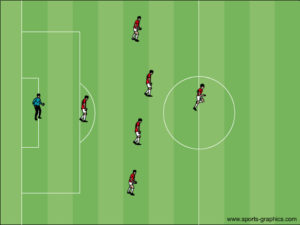
The 1-4-1 is similar to the 2-2-2 in that you have have good enough players that can join in with the attack and the defense. This formation has the potential to provide the most flexibility of all of them.
Combining These Formations
In a small-sided formation, it’s often more sensible to talk about using at least two different tactics. One that you use when defending and another for attacking.
3-2-1 Defending
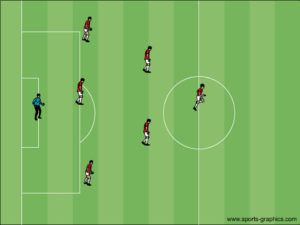
Transition into
2-1-3 Attacking
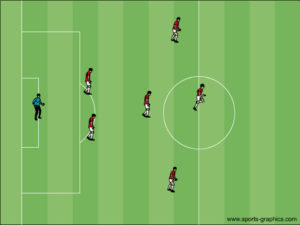
This shows how a team might implement a more defensive formation on defense and adapt it to be more attacking when it is going forward.
When a team is defending, they play 3 at the back with two midfielders sitting in central positions.
When they attack, the two midfielders go forward and wide to provide attacking options, while the central defender moves forward into midfield as a holding player.
4-1-1 Defending
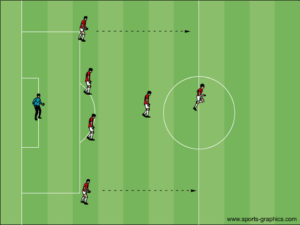
Transition into
2-1-3 Attacking
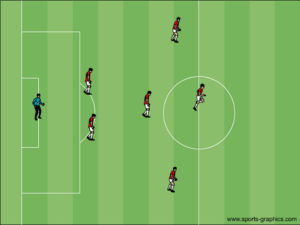
A 4-1-1 formation would be too defensive for an entire game. When you are on the attack, your wide players would move forward to support the attack, making it an effective 2-1-3. Your midfielder would also push up, leaving your two defenders ready to deal with any attacking threat.
